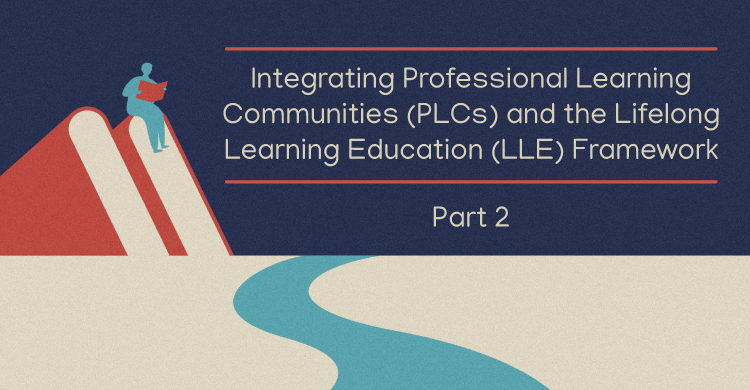Collaborative teams in PLC schools use the four critical questions of learning to drive their collective inquiry and action research:
- What do we want students to learn? (essential standards)
- How will we know if they have learned? (team-developed common assessments)
- What will we do if they don’t learn? (systematic interventions)
- What will we do if they already know it? (extended learning)
(DuFour, DuFour, Eaker, Many, 2010)
These questions are absolutely fundamental to the PLC process.
When considering critical question 1, I’m not sure the first time that I heard or read the statement “student by student, standard by standard” from a great mentor and Solution Tree icon Mike Mattos, but I do know that the statement has been transformational for my school and many of the schools with whom I work. At Olentangy Orange Middle School we use the phrase “student by student, target by target” because when we were developing a guaranteed and viable curriculum, the educators involved decided to use the term learning targets instead of standards.
Once educators truly understand what this statement means and how to use it to actually identify students’ strengths and weaknesses to truly differentiate instruction, they will see incredibly high levels of learning for all students and address each of the four critical questions for every unit of instruction.
I want to share a few specific strategies that our teachers use to truly make sure that all students are learning at high levels by not only knowing, but also living the phrase, “student by student, target by target.”
Our staff uses question 2 (results from team-developed common assessments), to truly answer questions 3 and 4 on interventions and extending learning.
- We are very “tight” about our teacher teams instructing “student by student, target by target,” but “loose” about how they do it.
We always encourage individual teachers to be creative in how they instruct and assess learning in their classrooms. Our teachers are continually looking for ways to improve their instruction to meet the needs of all students. As individual teachers test new strategies in their classrooms, they share insights with the other members of their collaborative teams.
- We are “tight” that all of our team-developed common assessments are aligned to learning targets, but “loose” about how teams indicate the targets on their assessments.
Some teams put the learning target being assessed above the actual question, while others code the learning target beside each question. The teams that code the learning target give a sheet with all the targets and codes to the students, so they also know which target is being assessed.
- We are “tight” that all students will be flex-grouped based on whether they achieve mastery of the learning targets, but “loose” about how the teachers actually flex-group.
Flex-grouping has become a buzz word and when I’ve pushed people over the years to explain how they flex-group, I often hear the same story over and over. In traditional schools, teachers give a baseline reading assessment and group students on the basis of their score on that single reading assessment. These ability groups can remain the same all year long, sometimes even with the same teacher, resulting in high, medium, and low groups or tracking. This bad practice is frustrating because students are being ranked and sorted on the basis of a single test score.
We have taken a different approach to flex-grouping at Orange Middle School, and we do it differently depending on the subject and the team. Below are a few examples:
- Our eighth-grade social studies teachers align every question on each assessment to a specific learning target. Students then work in groups to relearn the targets they missed or to do an extension activity if they achieved mastery of all targets.
- Our sixth-grade science teachers assess students based on learning targets for a certain time period (such as a week) and then have an extension lab at the end for all students who have learned the intended targets. Any student who is missing targets during the week works on the targets in groups and as they learn, they are expected to complete an extended learning lab during an academic assist time built into the schedule.
- Our math department uses preassessments of the necessary prerequisite skills to flex-group students to different teachers prior to a new unit. Based on the preassessment, students either receive more support or perform extended learning activities. Students who do not demonstrate mastery of certain skill go with one teacher; students who miss other targets go with a different teacher; and students who meet all targets go with another teacher for extensions. The teachers decide ahead of time who will be in charge of the relearning opportunities for each target based on their strengths in teaching those targets.
Grouping students based on mastery of learning targets instead of a single test score stops the high, medium, and low groupings because all students are working on areas of specific need based on their progress toward mastering specific learning targets (not scores).
This method is transformational because students start to take ownership of their learning when they know their specific areas of strengths and weaknesses and are expected to improve or extend their knowledge.
Prior to engaging in the PLC process, we had a culture in our school of “chasing the A.” As soon as a student earned 90%, they would say, “Well, I got the A so I don’t have to do anymore work.” However, when we truly live the phrase “student by student, target by target,” we no longer have to chase the A; we can truly focus on high levels of learning for all. We no longer settle for learning 90% of the intended targets or (for most students) learning most targets. Each student will learn all of the essential targets. As professional educators, it is our responsibility to make sure that this happens for all students.
Reference
DuFour, R., DuFour, R., Eaker, R., & Many, T. (2010). Learning by Doing: A Handbook for Professional Learning Communities at Work. Bloomington, IN: Solution Tree Press.
[author_bio id=”355″]






